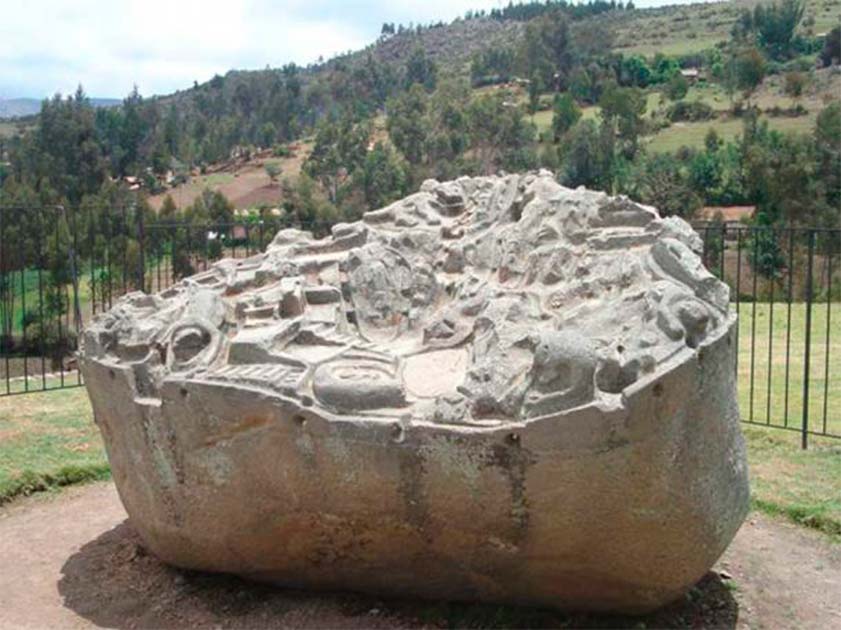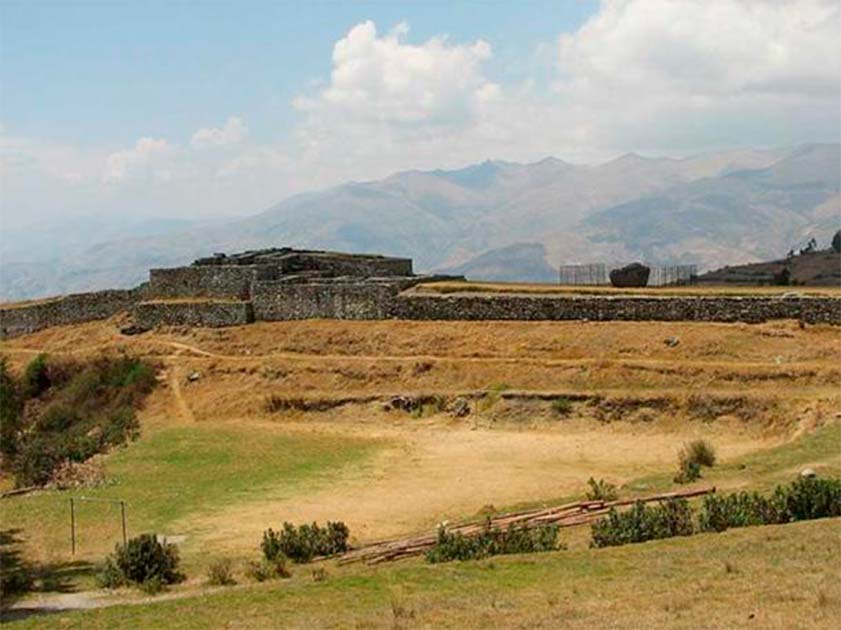Numerous designs etched onto a monolith were the handiwork of long-lost artisans who dedicated immense effort and possibly even shed tears in the creation process. This monolith, now situated in present-day Peru, is adorned with more than 200 patterns meticulously carved into the likeness of amphibians, reptiles, crustaceans, and big cats, all encircled by the depiction of terraces, bodies of water, tunnels, and irrigation systems. The exact motive and significance of these carvings remain an enigma.
The archaeological site of Sayhuite is nestled in Abancay, a province in the south-central region of Apurímac, Peru, and dates back to the epoch of the Inca Empire, between the 15th and 16th centuries AD. In comparison to other Incan relics, Sayhuite has little remaining evidence of its Incan history. The site’s most distinctive artifact is the Sayhuite Monolith, an enigmatic stone adorned with numerous intricate carvings.

The term ‘Sayhuite’ is thought to stem from the Quechua word ‘saywayta’, which means ‘place of orientation’. Perched atop the terraced hill known as Concacha, the site was once the location of an enclosed sanctuary. Today, all that is left of this sanctuary is an elevated platform where the Sayhuite monolith resides. Some academics propose that this site was one of the four sanctuary oracles of Apurimac, also called the ‘sons’ of Pachacamac. However, as it stands, there is insufficient archaeological proof to confirm this theory.

Unique Carvings
The Sayhuite Monolith isn’t the sole carved stone in the vicinity. A cluster of carved boulders, collectively referred to as Rumihuasi (or ‘stone house’), can be found in the valley beneath the site. The designs on the Rumihuasi monolith can be described as geometric, often consisting of steps and canals. In contrast, the Sayhuite Monolith features not only geometric designs but also zoomorphic ones. Consequently, while it isn’t the only sculpted stone in the area, it undoubtedly stands out for its uniqueness.
- (In Pics) Ten Great Lost Civilizations of Peru that aren’t the Inca
- What are the Inscriptions on the Dighton Rock, and Who Wrote Them?
The dimensions of the Sayhuite Monolith are roughly 2 meters in length and 4 meters in width. Although currently situated on the elevated platform atop Concacha, researchers are uncertain about its original location. Given that the monolith doesn’t naturally occur in this locale, it may have been transported. The monolith seems to have been displaced, possibly by grave robbers, in the past. Besides the question of its initial location, it’s also unclear who its creator might have been.
The Sayhuite Monolith has drawn significant interest due to its carvings. Over 200 zoomorphic and geometric designs can be observed on the monolith’s surface, primarily depicting reptiles, big cats, crustaceans, and frogs. Some researchers have suggested that the selection of these creatures may hold a symbolic value comprehensible to the Incas. For instance, the depiction of big cats could potentially allude to Cuzco, the capital of the Inca Empire, and its ruling class, particularly Pachacuti, the ninth Sapa Inca, and the inaugural ruler of the Inca Empire.

Decoding the Monolith’s Designs
In addition to the zoomorphic designs, the monolith also features geometric carvings, interpreted as depictions of terraces, bodies of water, tunnels, and irrigation systems. If this interpretation holds, it could imply that the stone serves as a scaled model of the landscape. Some have further suggested that the Sayhuite Monolith was potentially used as a topographical tool for studying hydraulics. In this hypothesis, the monolith was utilized by ancient Incan engineers to experiment with and observe water flow, which would then be applied to communal water projects. Furthermore, such a model could have served an educational purpose for aspiring engineers and technicians in the field.
- Unexplained Band of Holes at Pisco Valley, Peru
- The Sajama Lines: Bolivia’s Geoglyphs and the Nazca Connection
Nevertheless, some propose that the Sayhuite Monolith served a more spiritual or ritualistic function. It has been conjectured that the Sayhuite Monolith could have been a representation of the cosmos or related to a water-centric religious practice. With numerous natural springs nearby, it’s plausible that any rituals conducted at the site might have been connected to water management and rain procurement.
Regardless, the Sayhuite Monolith continues to captivate interest as a tantalizing mystery. From pondering its creators to its function, people will undoubtedly continue to hypothesize about it for many years to come.
Top image: The Sayhuite Monolith. Source: AgainErick/ CC BY SA 3.0
By Wu Mingren